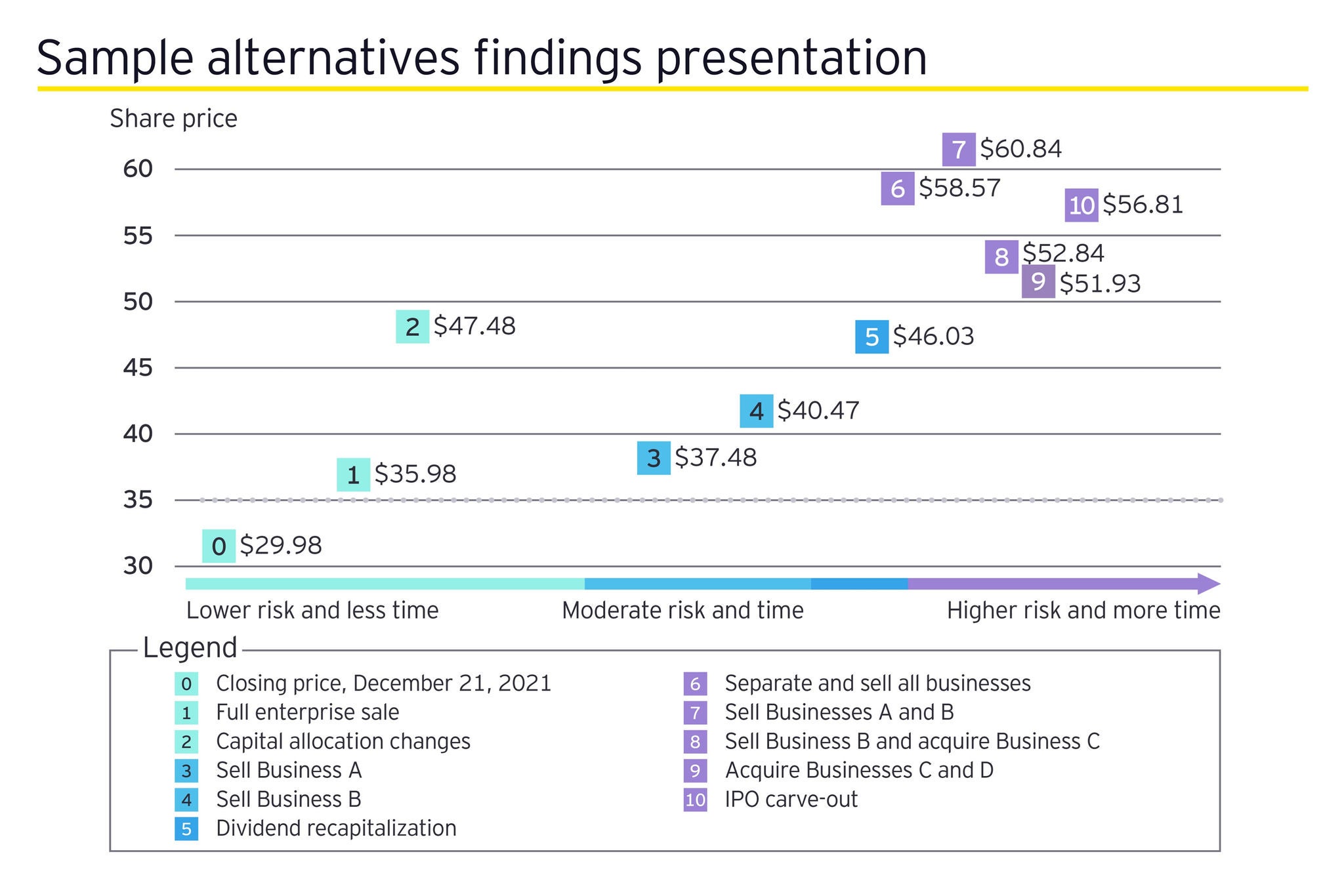EY refers to the global organization, and may refer to one or more, of the member firms of Ernst & Young Global Limited, each of which is a separate legal entity. Ernst & Young Global Limited, a UK company limited by guarantee, does not provide services to clients.
Strategic alternatives analysis
When considering critical strategic alternatives, companies may need an objective assessment of each potential course of action to help them make better decisions and create long-term value. With Ernst & Young LLP’s data-driven strategic alternatives framework, you can obtain an unbiased, disciplined analysis with a comprehensive financial, operational and tax perspective.
What EY can do for you
CEOs and business leaders make difficult decisions every day. But when you are facing complex choices with far-reaching and long-lasting impact on your entire organization, there’s a greater need for an independent point of view.
Using our structured framework, our experienced finance professionals can help identify, quantify and compare the impact of potential alternatives, considering time and risk among many factors. The results can help management objectively allocate capital to drive shareholder returns and overall stakeholder value.
We can help you answer key questions when evaluating strategic alternatives:
- Do we have the right mix of businesses?
- Should we consider strategic acquisitions or divestitures?
- Are share repurchases the best use of capital?
- Should we return capital to investors?
- Do we have internal unfunded opportunities?
- Is our capital structure appropriate?
- Can we disrupt our own business before a competitor does?
When do companies need more rigorous strategic alternatives analyses?
As a leading practice, companies regularly evaluate their strategy and the decisions that will drive it. However, there are certain conditions and initiatives that may trigger the need for a more structured, in-depth, and objective process that helps decrease decision-making bias. Examples include:
- Digital transformation
- Shareholder activism
- Restructuring
- Excess returns
- Market opportunity assessment
- Strategic reviews
- Leadership changes
- Negative performance relative to market or competitors
- Analyst or credit downgrade
- Rapid industry consolidation or deconsolidation
- Geopolitical or economic disruption
How our strategic alternatives framework works
Situational analysis
Drawing from client and external data, we can work with you to develop a point of view on how specific strategic alternatives can create value for your business. We can perform analyses from outside-in and inside-out to provide perspectives on business performance, market opportunities and relative positioning compared to industry competitors, including:
- Market trends and industry outlook
- Competitive benchmarking
- Financial health
- Firepower analysis to measure a company’s capacity for conducting M&A deals (considering cash and equivalents, market value and debt)
Strategic alternatives analysis
We can quantify the economic value associated with each alternative and present the results using dynamic data visualizations that provide quick perspectives on value creation opportunities and highlight specific scenarios. This considers:
- Valuation methodologies
- Time and risk
- Synergies
- Stranded costs
- Leverage and return
- Financial feasibility

Examples of strategic alternatives for consideration include:
- Maintaining the status quo
- Optimizing internal investment
- Changes to capital structure
- Portfolio optimization
- Selective acquisitions consistent with current business
- Disruptive strategic courses of action
- Divestment of a business, product or service
Finding the right way forward
For most companies, a strategic alternatives analysis is usually the beginning of a complex journey. After delivering a comprehensive view of your alternatives, our corporate finance consultants can help you determine next steps. Whether you need a deeper portfolio review, decision support around financing, tax structuring or other transaction services, we have the breadth of knowledge to support you from ideation through execution.
The team
Greg Hisenberg
Trusted business advisor helping companies drive stakeholder value. Focused on developing people and doing the right thing. Energetic father who loves the outdoors.
Loren Garruto
Results-oriented business advisor focused on driving shareholder value. Collaborator, developer of people, avid reader and proud mother.



